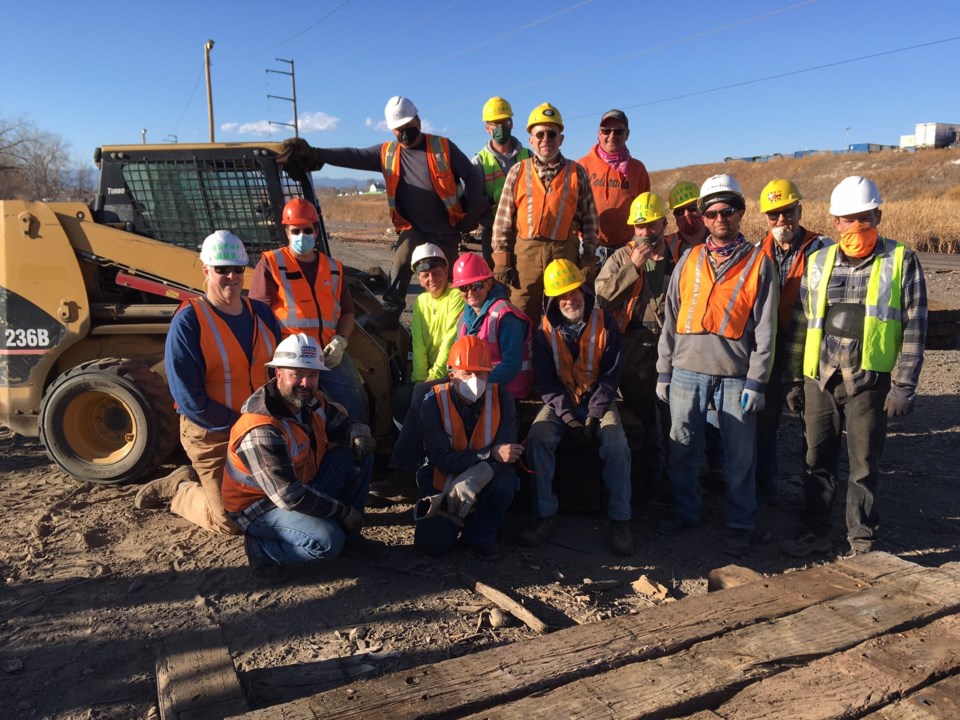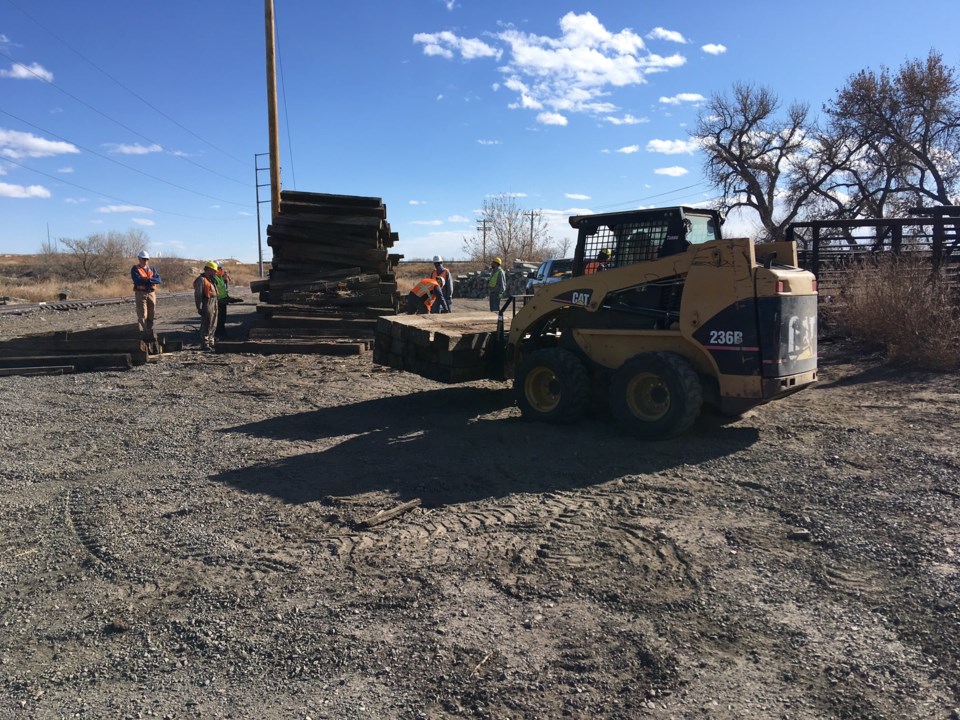Helping neighbors doesn’t just mean lending sugar or rolling out a trash bin. During the week of Thanksgiving, Burlington North Santa Fe Railroad helped the Como Depot restoration project by donating railroad ties from Longmont.
The Como project was developed four years ago to preserve the historic railway buildings in Como, said South Park Rail Society President Tim Bain.
The railway depot in Como, which is in Park County, was built in 1879 and served as the original divisional point on the Denver South Park Pacific Railway, Bain said.
Trains operated through Como until 1938, when the tracks were torn up, leaving only the buildings behind. The Como project hopes to restore a mile of track, the train depot, the Railway Hotel and the Stone Roundhouse.
“We are preserving as many of the original historic buildings as we possibly can and we are laying the rails back down to build the railyard again, just like it was 80 years ago,” Bain said.
When complete, the restoration project will include in a railway museum that focuses on the narrow-gage railways in Park County, he said.
On Nov. 22, a BNSF crew helped the South Park Rail Society load 450 standard ties and 15 crossing ties to be taken from Longmont to Como to help restore the mile of track, according to a South Park Rail Society Facebook post.
The rail ties all come from maintenence done by BNSF and were stored at First and Main St. in Longmont. Phil Greenwald, city of Longmont Transportation Planning Manager, thought the rails may have come from a major track replacement near Lyons in 2017. "The original track said “1898” on the steel," Greenwald said.
The Como restoration project receives donated rails from several railway companies.
“The ties, on the other hand, can be a little harder because they are wood and wood rots. They do get recycled a little bit but they do have a much shorter lifespan,” Bain said.
Through a working relationship with BNSF, the South Park Rail Society has received several donations of used ties.
 The “Front Range A Team,” loading railroad ties donated to the Como restoration project. Front, left to right, Nick Ralston, Brad Lester, Steve Schweighoffer, Jeff Ramsey, Jim Scoville and Tristan Wenger. Middle, Steve Thompson, Brian Delaphane, Lucky, Raquel Trujillo, Pat Mauro and Dave Seniw. Back, Jim McBee, Robert Messenger, Bob Schoppe and Steve Disher. Not pictured, Chip Sherman and Tom Lawson.(Photo courtesy of South Park Rail Society)
The “Front Range A Team,” loading railroad ties donated to the Como restoration project. Front, left to right, Nick Ralston, Brad Lester, Steve Schweighoffer, Jeff Ramsey, Jim Scoville and Tristan Wenger. Middle, Steve Thompson, Brian Delaphane, Lucky, Raquel Trujillo, Pat Mauro and Dave Seniw. Back, Jim McBee, Robert Messenger, Bob Schoppe and Steve Disher. Not pictured, Chip Sherman and Tom Lawson.(Photo courtesy of South Park Rail Society)“What is considered not good enough for the mainline railways anymore are still plenty good for our use in Como,” Bain said.
BNSF Spokesperson Benjamin Wilemon said, “BNSF has a rich history and genealogy of predecessor railroads that dates back almost two centuries. We value this heritage and celebrate it in various ways. One of the ways in which we celebrate is through the donation of ties to various historical societies and nonprofits, such as the South Park Rail Society, which is an extension of one of our major predecessors. We have been able to support their project through multiple tie donations in the past and look forward to that continued relationship.”
The South Park Rail Society will hold several work days in 2021 to lay the ties donated from Longmont.
Correction: The railroad ties were not from the First and Main Project. No track work is planned at the First and Main St. project in the near future for passenger rail, according to Greenwald.



